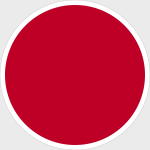Hobby Master HA8808 Imperial Japanese Navy Mitsubishi A6M2 "Zero" Type 21 Fighter - Lt. Takumi Hoashi, IJN Aircraft Carrier Shokaku, Pearl Harbor, Hawaii, December 1941 (1:48 Scale)
"We have resolved to endure the unendurable and suffer what is insufferable."
- Japanese Emperor Hirohito speaking to the Japanese people after the atomic bombings, August 1945
 The Mitsubishi A6M Zero was a light-weight carrier-based fighter aircraft employed by the Imperial Japanese Navy Air Service from 1940 to 1945.
The Mitsubishi A6M Zero was a light-weight carrier-based fighter aircraft employed by the Imperial Japanese Navy Air Service from 1940 to 1945.
It is universally known as Zero from its Japanese Navy designation, Type 0 Carrier Fighter (Rei shiki Kanjo sentoki), taken from the last digit of the Imperial year 2600 (1940), when it entered service. In Japan it was unofficially referred to as both Rei-sen and Zero-sen. The official Allied code name was Zeke (Hamp for the A6M3 model 32 variant); while this was in keeping with standard practice of giving boys' names to fighters, it is not definitively known if this was chosen for its similarity to "Zero".
Pictured here is a 1:48 scale replica of an Imperial Japanese Navy Mitsubishi A6M2 "Zero" Type 21 fighter that was piloted by Lt. Takumi Hoashi, who was embarked upon the IJN Shokaku, then attacking Pearl Harbor, Hawaii, during December 1941.
Sold Out!
Dimensions:
Wingspan: 9-inches
Length: 7-1/4-inches
Release Date: June 2021
Historical Account: "Shokaku" - Shokaku ("Soaring Crane") was an aircraft carrier of the Imperial Japanese Navy, the lead ship of her class. Along with her sister ship Zuikaku, she took part in several key naval battles during the Pacific War, including the attack on Pearl Harbor, the Battle of the Coral Sea and the Battle of the Santa Cruz Islands before being torpedoed and sunk by a U.S. submarine at the Battle of the Philippine Sea.
The Shokaku-class carriers were part of the same program that also included the Yamato-class battleships. No longer restricted by the provisions of the Washington Naval Treaty, which expired in December 1936, the Imperial Japanese Navy (IJN) was free to incorporate all those features they deemed most desirable in an aircraft carrier, namely high speed, a long radius of action, heavy protection and a large aircraft capacity. Shokaku was laid down at Yokosuka Dockyard on December 12th, 1937, launched on June 1st, 1939, and commissioned on August 8th, 1941.
With an efficient modern design, a displacement of about 32,000 long tons (33,000 t), and a top speed of 34 kn (63 km/h; 39 mph), Shokaku could carry 70-80 aircraft. Her enhanced protection compared favorably to that of contemporary Allied aircraft carriers and enabled Shokaku to survive serious damage during the battles of the Coral Sea and Santa Cruz.


